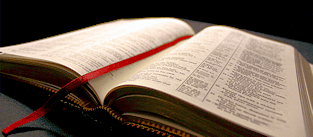Esarhaddon

Bible Usage:
- Esarhaddon used 3 times.
- First Reference: 2 Kings 19:37
- Last Reference: Isaiah 37:38
Dictionaries:
- Included in Eastons: Yes
- Included in Hitchcocks: No
- Included in Naves: No
- Included in Smiths: Yes
- Included in Websters: No
- Included in Strongs: Yes
- Included in Thayers: No
- Included in BDB: Yes
Strongs Concordance:
- H634 Used 3 times
Assur has given a brother, successor of Sennacherib (2 Kings 19:37; Isaiah 37:38). He ascended the throne about B.C. 681. Nothing further is recorded of him in Scripture, except that he settled certain colonists in Samaria (Ezra 4:2). But from the monuments it appears that he was the most powerful of all the Assyrian monarchs. He built many temples and palaces, the most magnificent of which was the south-west palace at Nimrud, which is said to have been in its general design almost the same as Solomon's palace, only much larger (1 Kings 7:1-12).
In December B.C. 681 Sennacherib was murdered by two of his sons, who, after holding Nineveh for forty-two days, were compelled to fly to Erimenas of Ararat, or Armenia. Their brother Esarhaddon, who had been engaged in a campaign against Armenia, led his army against them. They were utterly overthrown in a battle fought April B.C. 680, near Malatiyeh, and in the following month Esarhaddon was crowned at Nineveh. He restored Babylon, conquered Egypt, and received tribute from Manasseh of Judah. He died in October B.C. 668, while on the march to suppress an Egyptian revolt, and was succeeded by his son Assur-bani-pal, whose younger brother was made viceroy of Babylonia.
(victor), one of the greatest of the kings of Assyria, was the son of Sennacherib, (2 Kings 19:37) and the grandson of Sargon, who succeeded Shalmaneser. He appears by his monuments to have been one of the most powerful, if not the most powerful, of all the Assyrian monarchs. He is the only one of them whom we find to have actually reigned at Babylon, where he built himself a palace, bricks from which have been recently recovered bearing his name. His Babylonian reign lasted thirteen years, from B.C. 680 to B.C. 667; and it was doubtless within this space of time that Manasseh king of Judah, having been seized by his captains at Jerusalem on a charge of rebellion, was brought before him at Babylon, (2 Chronicles 33:11) and detained for a time as prisoner there. As a builder of great works Esar-haddon is particularly distinguished. Besides his palace at Babylon, he built at least three others in different parts of his dominions, either for himself or his sons, and thirty temples.

Bible Usage:
- Esarhaddon used 3 times.
- First Reference: 2 Kings 19:37
- Last Reference: Isaiah 37:38
Dictionaries:
- Included in Eastons: Yes
- Included in Hitchcocks: No
- Included in Naves: No
- Included in Smiths: Yes
- Included in Websters: No
- Included in Strongs: Yes
- Included in Thayers: No
- Included in BDB: Yes
Strongs Concordance:
- H634 Used 3 times
